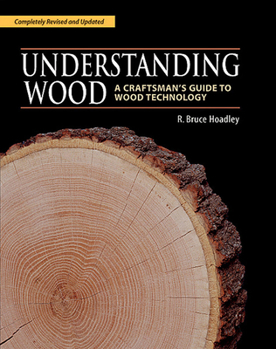Understanding Wood: A Craftsman's Guide to Wood Technology
Select Format
Select Condition 
Book Overview
Widely regarded as the must-have cornerstone of any serious woodworker's library, this definitive reference is essential for any DIYer or maker who wants their projects to last a lifetime.
This essential reference for the woodworker seeking quality and cost savings, this book offers an in-depth look at the nature and properties of wood, making it the indispensable resource for mastering the material at the heart of your craft.
Written by scientist and craftsman R. Bruce Hoadley, Understanding Wood allows you to master the science and maximize your results.
By knowing how wood grows, moves, shrinks, and swells, you can:
Eliminate Waste: Prevent warping, joint failure, and cracking that ruin lumber and cost you money.Source Smarter: Gain the knowledge and confidence to select and store raw materials, ensuring you get the best value for your dollar.Build Permanently: Apply scientific principles to master cutting, seasoning, machining, joining, bending, and finishing wood, creating durable pieces of heirloom quality.
This updated edition builds on timeless knowledge while incorporating new developments in composite materials, adhesives, and finishes. Featuring over 300 detailed photographs and illustrations, Understanding Wood gives you the knowledge and confidence to truly master your material--from the raw tree to the final finish.
Widely regarded as a must-have for any woodworking enthusiast, it offers an in-depth look at the nature and properties of wood, making it an indispensable resource for craftsmen of all skill levels.
Whether you're a seasoned craftsman or just starting out, Understanding Wood will give you the knowledge and confidence to master the material at the heart of your craft.
Key Features: Comprehensive Guide: Learn everything about wood technology, from the raw materials to understanding the unique properties of different woods.Updated Content: New information on modern materials and techniques, including composites, adhesives, and finishes, to help you stay current in your craft.Visual Learning: Over 300 detailed photographs and illustrations bring critical woodworking concepts to life.Scientist & Craftsman's Insight: Written by an expert with a true love for woodworking, offering both technical expertise and practical advice.Timeless Knowledge: With over 130,000 copies sold, this book continues to be the cornerstone of any serious woodworker's library.





